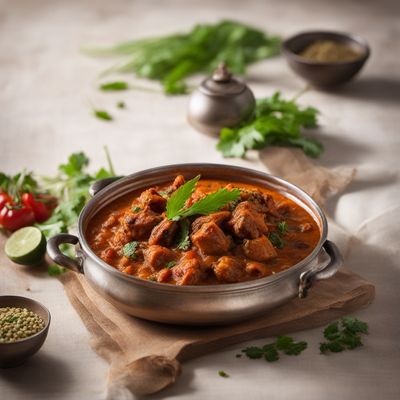
Ingredient
Rabbit carcase
The Art of Rabbit: Unlocking the Culinary Potential of Rabbit Carcass
Rabbit carcass consists of the bones, meat, and connective tissue left after the butchering process. The meat is lean, tender, and has a delicate flavor that is slightly sweet. The bones are rich in gelatin, which adds depth and richness to stocks, broths, and sauces. Rabbit carcass is commonly used in dishes like stews, soups, and braises, where the slow cooking process allows the flavors to meld together.
Origins and history
Rabbits have been consumed as a food source for centuries, dating back to ancient civilizations such as the Egyptians and Romans. They were introduced to North America by European settlers in the 17th century and have since become a popular meat source. Rabbit carcass is particularly prominent in French cuisine, where it is used to make classic dishes like rabbit stew and rabbit terrine.
Nutritional information
Rabbit carcass is a lean meat that is low in fat and calories. It is a good source of protein, vitamins, and minerals, including iron and vitamin B12. The bones of the rabbit carcass are rich in gelatin, which provides collagen and can support joint health. A 3-ounce serving of rabbit carcass provides approximately 150 calories, 25 grams of protein, and 5 grams of fat.
Allergens
None
How to select
When selecting rabbit carcass, look for fresh, plump carcasses with firm, pink flesh. Avoid carcasses that have a strong odor, discolored or slimy skin, or signs of spoilage. If purchasing from a butcher or farmer's market, ask for recommendations on the freshest rabbit carcasses available.
Storage recommendations
To maintain the freshness of rabbit carcass, it is best to store it in the refrigerator. Wrap the carcass tightly in plastic wrap or place it in an airtight container to prevent moisture loss and contamination. Use the meat within 2-3 days of purchase for the best quality and flavor. If freezing, ensure the carcass is properly cleaned and wrapped in freezer-safe packaging to avoid freezer burn.
How to produce
Raising rabbits for meat can be done on a small scale, making it suitable for backyard farming or homesteading. Rabbits are relatively easy to care for and can be raised in hutches or cages. They require a balanced diet, consisting of hay, fresh vegetables, and a small amount of commercial rabbit feed. Consult with local rabbit breeders or agricultural extension offices for guidance on raising rabbits for meat.
Preparation tips
Rabbit carcass can be prepared in various ways, depending on the desired dish. For stews and braises, simmer the carcass with aromatic vegetables, herbs, and spices to infuse the flavors into the meat and bones. When making stocks or broths, roast the carcass first to enhance the depth of flavor. Rabbit carcass can also be used to make pâtés, terrines, or rillettes, where the meat is cooked slowly in fat for a rich and spreadable texture.
Culinary uses
Rabbit carcass is commonly used in traditional French cuisine, where it is the base for dishes like rabbit stew, rabbit terrine, and rabbit rillettes. It is also used in other European cuisines, such as Italian and Spanish, where it is incorporated into stews, ragùs, and pasta dishes. In contemporary cuisine, rabbit carcass is gaining popularity among chefs who value its unique flavor and versatility.
Availability
France, Italy, Spain
More ingredients from this category » Browse all

Duck carcase
The Essence of Duck: Unveiling the Secrets of Duck Carcase

Deer carcase
Venison: The Wild Delicacy

Goat carcase
The Wholesome Base

Bovine carcase
The Foundation of Flavor

Sheep carcase
The Art of Lamb: Exploring the Versatility of Sheep Carcass

Chicken carcase
The Foundation of Flavor: Unleashing the Potential of Chicken Carcase

Wild boar carcase
Untamed Bounty: Wild Boar

Goose carcase
The Flavorful Foundation

Ratites carcase
The Exotic Delicacy: Ratites Carcase Unveiled

Turkey carcase
The Versatile Turkey Carcase

Asses-mules-hinnies carcase
The Forgotten Meat

Pig carcase
Pig Carcase: A Versatile Ingredient
Recipes using Rabbit carcase » Browse all

Zesty Istrian Rabbit Stew
Savory Delight: Zesty Istrian Rabbit Stew

Indonesian Indian Spiced Rabbit Curry
Rajasthani Rasa Rabbit: A Fusion of Indonesian and Indian Flavors

Zec na hvarski (Hvar Island-style Rabbit)
Savory Delight: Hvar Island-inspired Rabbit Stew

Irish-style Braised Rabbit
Savory Irish Rabbit Stew: A Hearty Delight from the Emerald Isle

Grilled Rabbit in Henan Style
Fiery Rabbit Delight: Grilled Henan-style

Caribbean-style Barbecue Ribs
Tropical Delight Ribs: A Taste of the Caribbean

Hamburg-style Garlic Rabbit
Savory Rabbit Delight: Hamburg's Garlic Infusion

Chettinad-style Rabbit Curry
Spicy and Fragrant Chettinad Rabbit Curry

Italian Rabbit Antipasto
Savory Delights: Italian Rabbit Antipasto - A Flavorful Twist on Traditional Italian Cuisine

Creamy French Rabbit Stew
Savory Delight: Creamy French Rabbit Stew with a Twist

Cuban-Style Barbecue Ribs
Havana Heat: Cuban-Inspired Barbecue Ribs

Morteruelo: A Hearty Spanish Delight
Savory Morteruelo: A Taste of Spanish Comfort